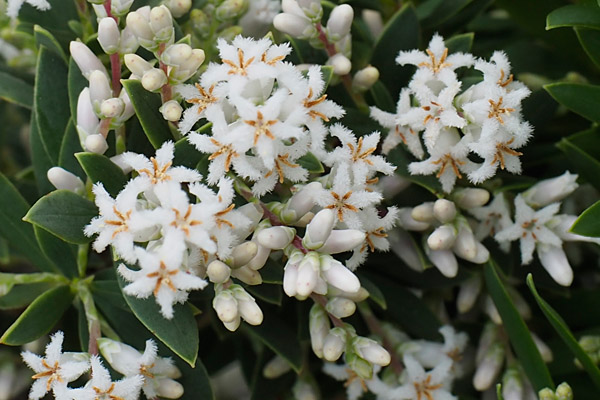General Description:
The plant family Ericaceae (heaths and heathers) is widespread in many parts of the globe, particularly Europe and South Africa. It contains a number of widely cultivated plants such as Erica, Rhododendron and Pieris.
Like most of Australia’s members of the Ericaceae, Leucopogon belongs to the subfamily Epacridoideae, which was formerly classified as a separate family, the Epacridaceae. Leucopogon consists of about 160 species, mostly Australian but some are also found in New Zealand and in islands to the north of Australia. They occur in a variety of habitats from sub-alpine areas to coastal heaths.
Leucopogon parviflorus is a medium, bushy shrub or small tree up to 5 metres high. The lance-shaped leaves up to 25 mm long and 6-7 mm wide. Flowering occurs in winter and spring and the small, white flowers are about 4 mm long, occurring in clusters of up to 13 flowers. As is typical of the genus, the flowers have hairy lobes. The flowers are followed by white, edible berries.
Few leucopogons are seen in cultivation, mainly due to difficulties in propagation and those that have been cultivated have proven to be difficult to maintain. L.parviflorus would require moist, well drained situation in a sunny or lightly shaded position.
Propagation of L.parviflorus is difficult. Germination of seed is usually slow and unreliable using conventional methods. Cuttings are also unreliable and may produce a limited success rate. Cuttings of firm current season’s growth are likely to give the best results and use of a root-promoting hormone is advisable.

Leucopogon parviflorus
Photo: Brian Walters
 Australian Native Plants Society (Australia)
Australian Native Plants Society (Australia)